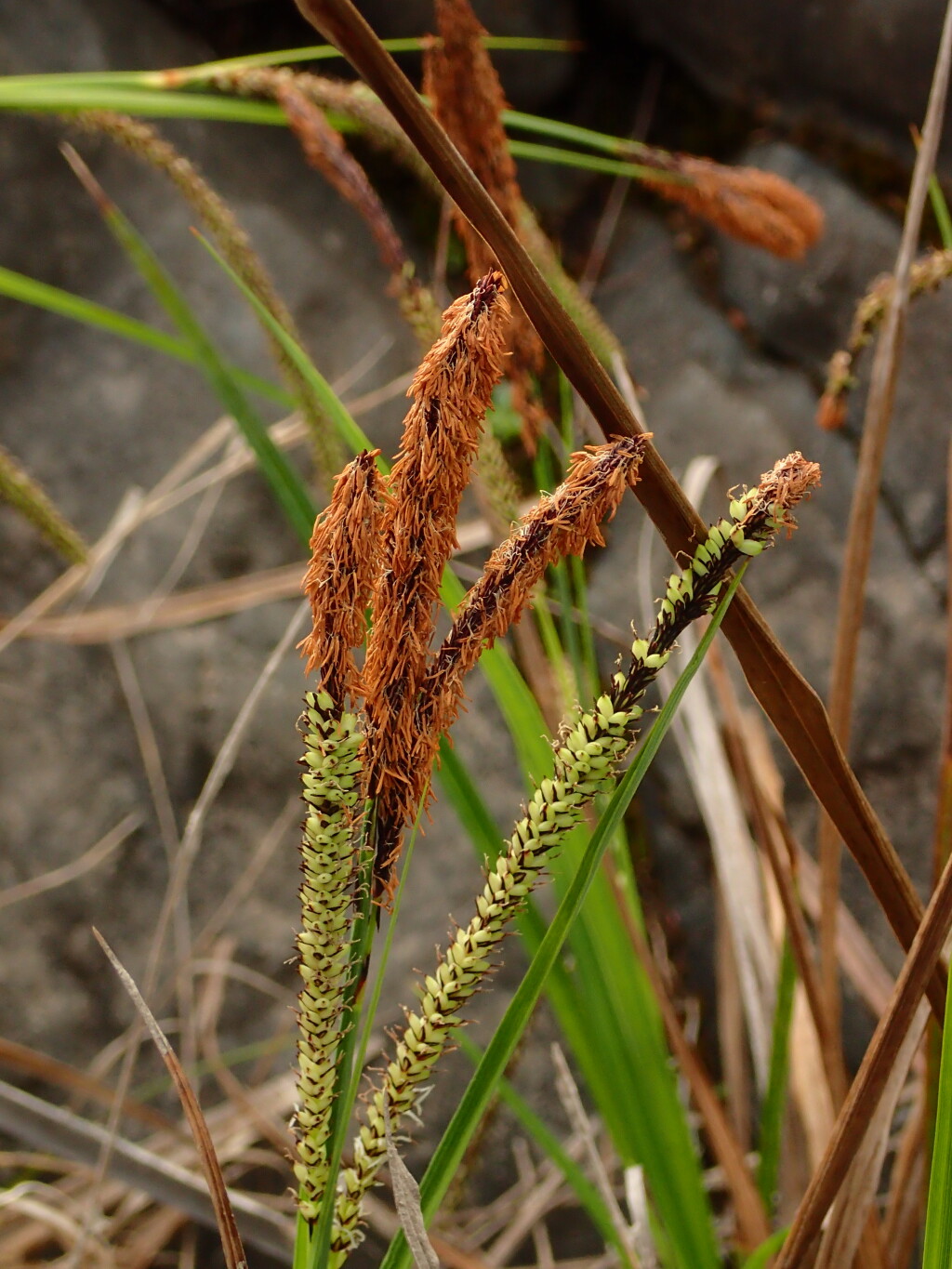Carex polyantha
F.Muell River SedgeRhizome long; shoots densely tufted. Culms erect, trigonous, smooth below, scabrous above, 20–80 cm long, c. 2.5 mm diam. Leaves about as long as culms, 4–9 mm wide; sheath orange-brown; ligule acute to retuse. Inflorescence erect, 10–55 cm long, with 5–8 spikes solitary at nodes; lowest involucral bracts exceeding inflorescence. Spikes sessile to subsessile, distant, erect to spreading at maturity, 2–17 cm long, upper 1–5 spikes entirely male or occasionally with female flowers below; lower spikes female or with male flowers above; glumes very narrow, acute to acuminate, dark red-brown with paler midrib; female glumes 2–3.5 mm long; utricles 2–3 mm long, c. 1.5 mm diam., obovoid to ovoid, nerveless or faintly nerved, glabrous, occasionally minutely papillose at apex, rarely scattered-hispid at apex, pale brown but densely red-dotted; beak short but distinct, 0.2–0.3 mm long, with apex truncate or notched; style 2 (rarely 3)-fid. Nut obovoid, lenticular, pale yellow. Flowers spring–summer.
VVP, VRiv, GipP, Gold, CVU, NIS, EGL, EGU, HSF, HNF, MonT, VAlp. Also Qld, NSW, ACT, Tas. Rather common along rocky and sandy stream margins, chiefly in foothills east of Melbourne, rarely ascending to the sub-alps (as at Big River near Mt Bogong), and along the Lerderderg River west of Melbourne.
Similar to Carex gaudichaudiana and C. hypandra, but the utricles usually taper more abruptly to the distinct, ± parallel-sided beak than in those species.
Wilson, K.L. (1994). Cyperaceae. In: Walsh, N.G.; Entwisle, T.J., Flora of Victoria Vol. 2, Ferns and Allied Plants, Conifers and Monocotyledons, pp. 238–356. Inkata Press, Melbourne.
 Spinning
Spinning
